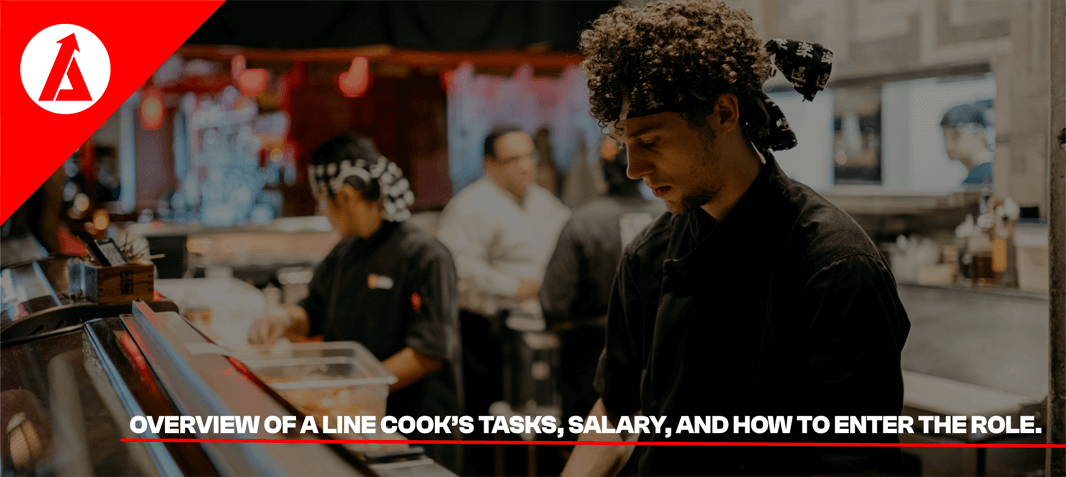


The restaurant industry employs over 15 million people in the U.S. alone—and one of the most in-demand roles is the line cook. These behind-the-scenes heroes are the backbone of every busy kitchen, from food trucks to fine dining.
If you're someone who stays cool under pressure, enjoys hands-on work, and wants to earn while learning real kitchen skills, line cooking could be a great fit for you. And the best part? You don't have to go job-hunting the old-school way.
With AnyShift, the top gig app for temporary jobs, you can find cooking shifts at local restaurants whenever it fits your schedule. Whether you're curious about the food world or just need some extra income, getting started is quick and easy.
Let's take a closer look at what a line cook does, how much you can make, and how you can start today.
Being a line cook isn't just about tossing food on a pan—it's a full-on, fast-moving job that requires skill, focus, and serious hustle. Here's what the day-to-day typically looks like:
Before the rush starts, line cooks prep everything they'll need—this includes chopping vegetables, marinating proteins, preparing sauces, and making sure every ingredient is ready to go. This setup is called mise en place, and it's the backbone of a smooth kitchen service.
From grilling and sautéing to frying and baking, line cooks operate all kinds of kitchen equipment. Each cook is usually assigned to a specific station, and they're responsible for making sure every dish from that station is cooked perfectly and on time.
Whether it's the grill, sauté, or fry station, each line cook needs to know their station inside out. They must keep it stocked, clean, and moving efficiently through each service.
Consistency is key in any kitchen. Line cooks must follow recipes exactly—right portions, right temps, same taste every time.
Clean hands, clean surfaces, safe food handling—no exceptions. Line cooks stick to strict food safety rules to keep customers safe and avoid any health code issues.
Kitchens are all about timing. Line cooks work closely with other cooks, prep staff, and the head chef to make sure everything comes together on the plate—at the same time.
Each cook is responsible for keeping their station clean during and after service. A tidy station = a smooth, stress-free shift.
Things can get intense during busy hours. Line cooks need to stay calm, focused, and fast—without letting quality drop.
Depending on the type of kitchen—fine dining, casual, catering, or fast food—the role can shift. In smaller kitchens, you might juggle multiple stations. In larger ones, you'll likely specialize in just one.
You don't need a fancy degree to become a line cook—but you do need the right mix of practical skills and a good attitude. Here's what helps:
These are the things you'll actually do on the job:
These help you handle the fast-paced kitchen life:
Not really! But here's what can help:
With the right skills and a willingness to learn, anyone can get started as a line cook—even without experience.
Wondering how much line cooks make and where this job can take you? Here's what you need to know:
On average, line cooks earn around $14-$20 per hour. That can go higher with more experience or in busy cities. In some restaurants, you might also get tips or shared service charges.
Note: Pay can vary based on where you live, the restaurant type, and your experience.
Several things can influence how much you earn:
Starting as a line cook can open the door to bigger roles in the kitchen:
Depending on where you work, you might also get:
A line cook job is a solid starting point if you love food and want to grow in the kitchen world—plus, it can lead to bigger opportunities if you stick with it.
Want to work in a kitchen but not sure where to begin? Here's a simple guide to help you get started—even if you have no experience!
You don't need fancy experience. Just make a short resume that shows:
Here's where you can find kitchen jobs:
Try AnyShift - it's the top-rated gig app for restaurant jobs. If you're in Texas (Dallas, Houston, Austin, or anywhere nearby), you can find kitchen shifts that fit your schedule—no interviews, no long process. Just pick a shift and go!
If you're applying for a full-time job, you might get an interview. Here's how to get ready:
If you're new, start with an entry-level job like:
These jobs help you gain experience fast.
Once you're in the kitchen, learn as much as you can:
Getting started as a line cook is easier than you think. And with AnyShift, you can begin right away—work when you want, where you want.
Want to do well in the kitchen? Here are some easy tips that can make a big difference:
Speed is important in a busy kitchen—but so is getting things right.
A messy station slows you down and can be unsafe.
Watch and learn from more experienced cooks.
Things can change fast in a kitchen—new orders, missing ingredients, or busy rush hours.
Even the best cooks are always learning.
If you love food and enjoy a fast-paced environment, becoming a line cook could be the perfect way to start your culinary journey. You'll learn real skills, meet great people, and grow every day on the job.
And if you're just looking to try it out or earn on the side, don't forget: you can find real kitchen gigs anytime through AnyShift, the top-rated app for flexible restaurant work in Texas.